Finasteride is the most commonly prescribed medication for the treatment of male pattern hair loss around the world. For male pattern hair loss, I routinely prescribe finasteride, and in some cases dutasteride. Many patients express concern about their continued hair loss and lack of significant hair growth while on finasteride. They wonder if it’s worthwhile to take the medication, or they believe it won’t work for them.
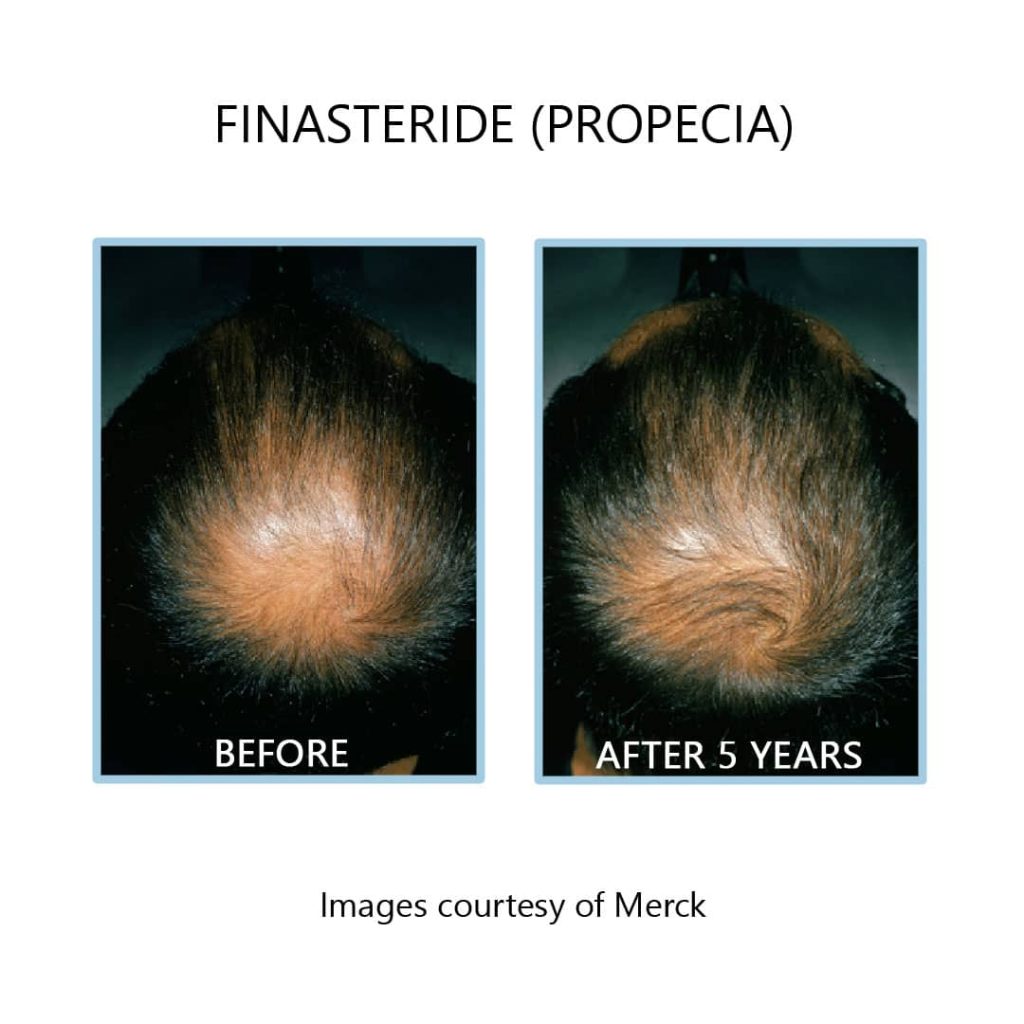
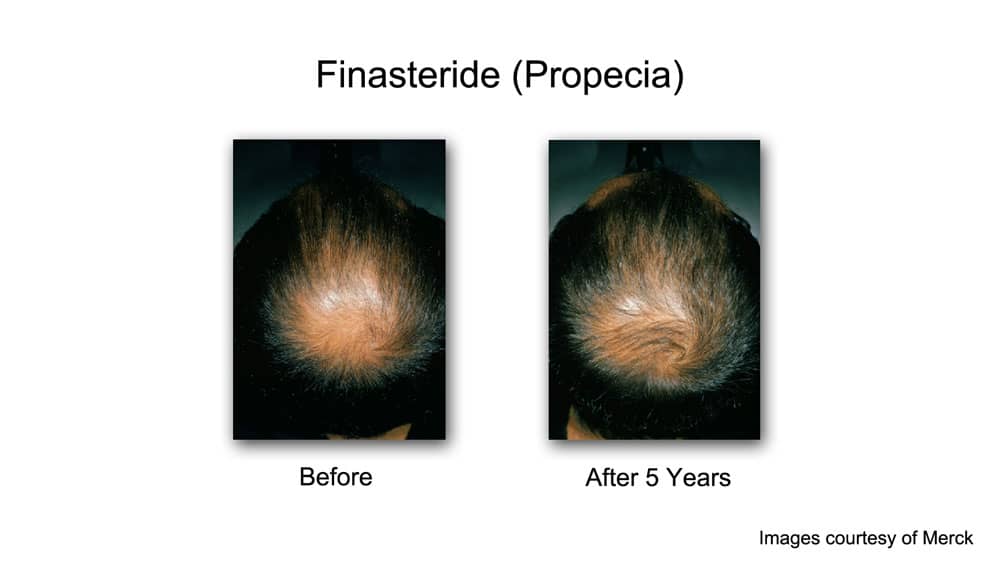
I’ll talk about my experience managing male pattern hair loss in patients who had previously been on finasteride, as well as my strategy for its role in male pattern hair loss management. Throughout my career, I used surgical hair transplantation, and finasteride to treat male pattern hair loss. For many years, my primary goal was to improve hair transplant outcomes because hair graft yield was frequently reduced by the survival of the transplanted hair. Imagine the surgeon’s, technicians’, and, most importantly, the patient’s pain and frustration if 30-90% of the transplanted hair fails to grow.
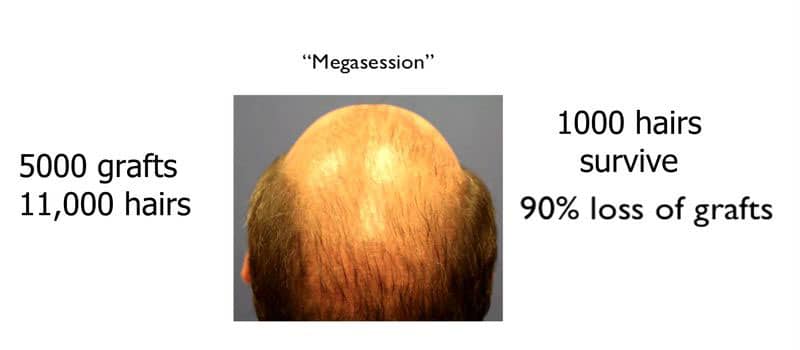
In 2011, I had a significant epiphany while using an extracellular matrix from the company ACell, and platelet-rich plasma to improve hair graft survival, and donor area healing. Even in a patient with advanced hair loss, 1 year after surgery, thinning hair that wasn’t transplanted became thicker. I made it my mission for the next several years to determine the potential of this observation to develop a predictable, and highly effective non-surgical treatment for male and female pattern hair loss.
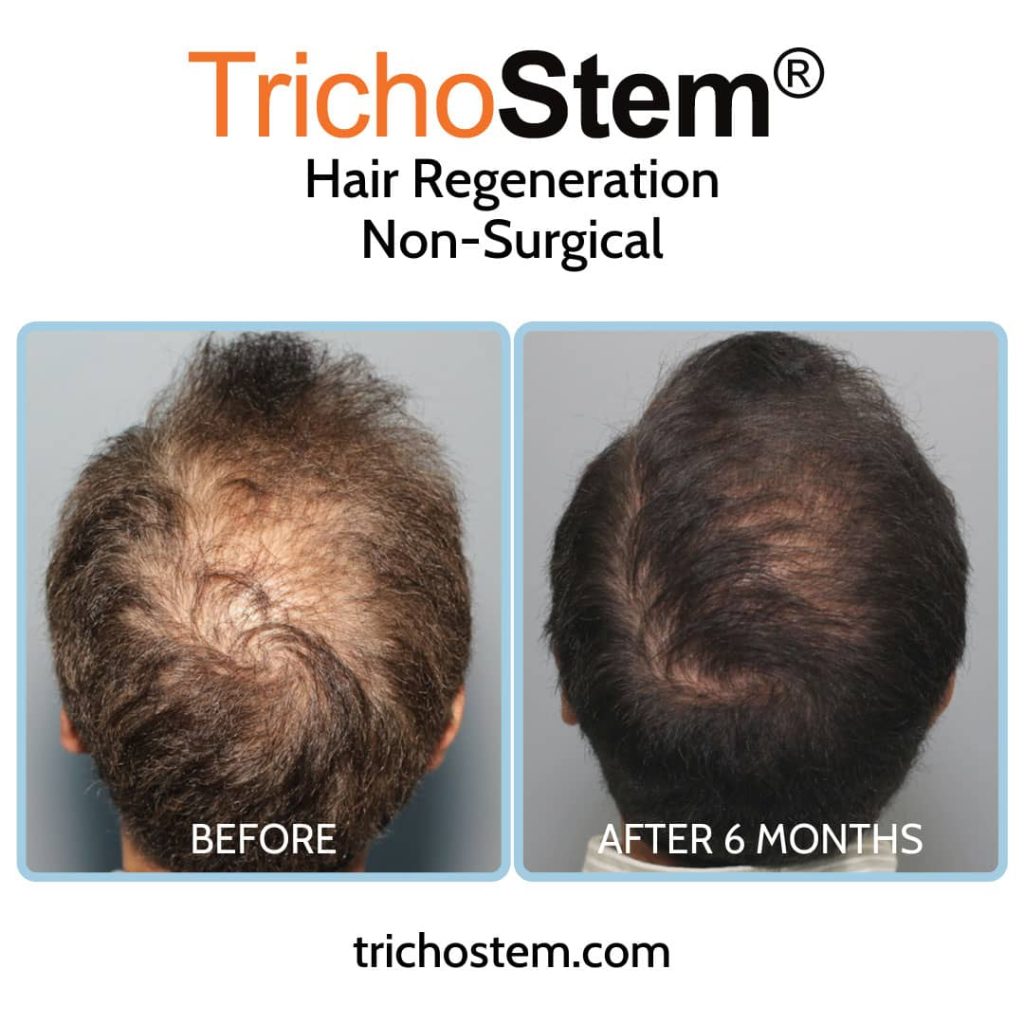
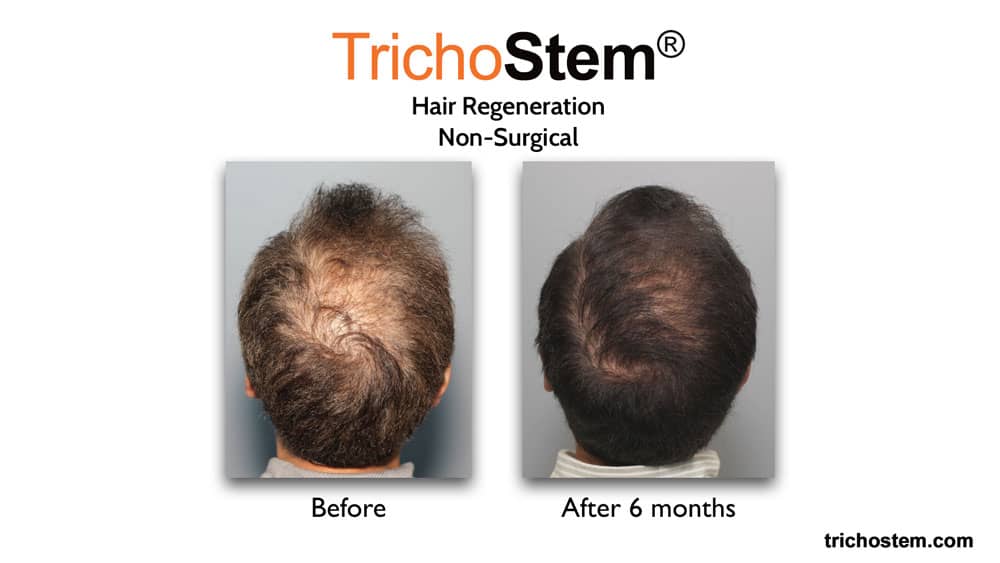
I created the TrichoStem Hair Regeneration System based on customized formulations and my development of treatment plans based on specific characteristics such as age, age of onset, rate of progression, and degree of hair loss. I’ve been able to help patients achieve long-lasting results non-surgically with 1 to 2 treatment sessions, with benefits lasting 3-5 years or more, while in the right patient, often exceeding the scalp coverage of two hair transplant surgeries.
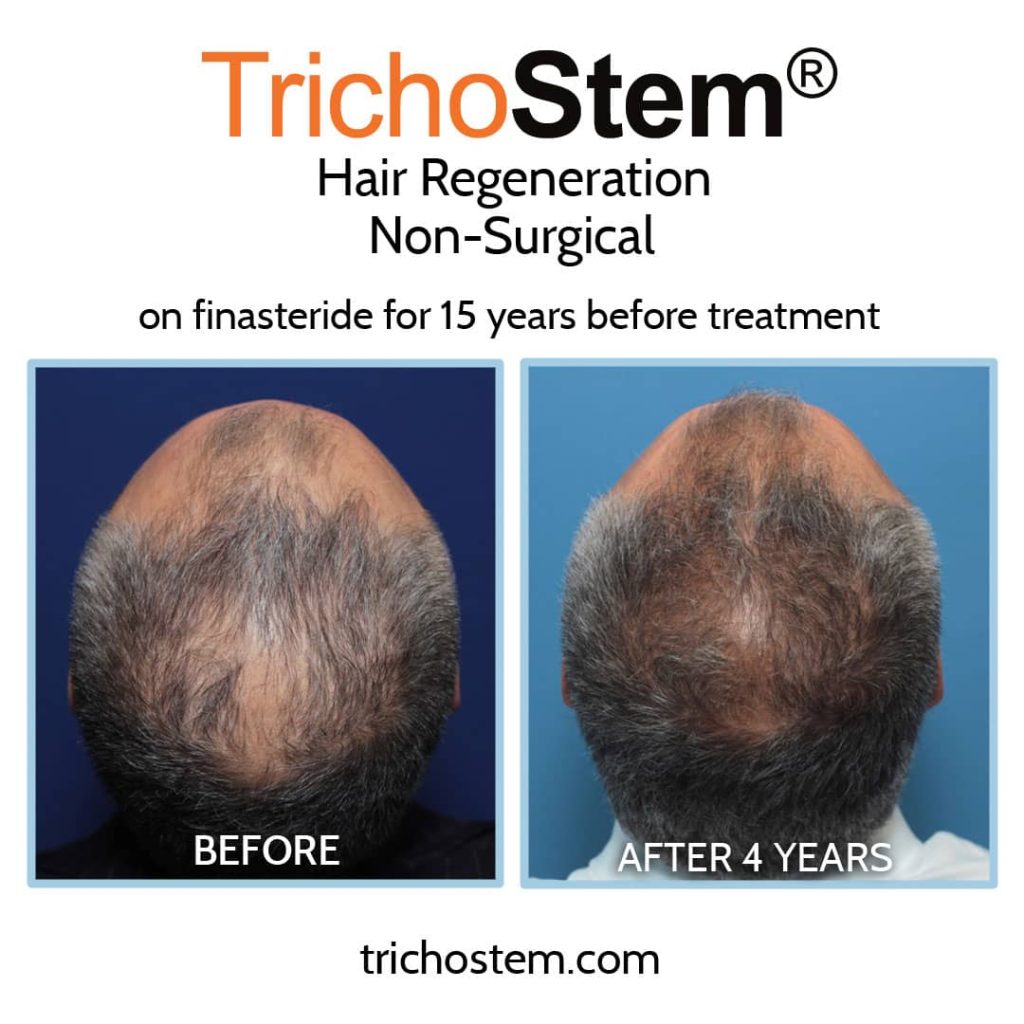
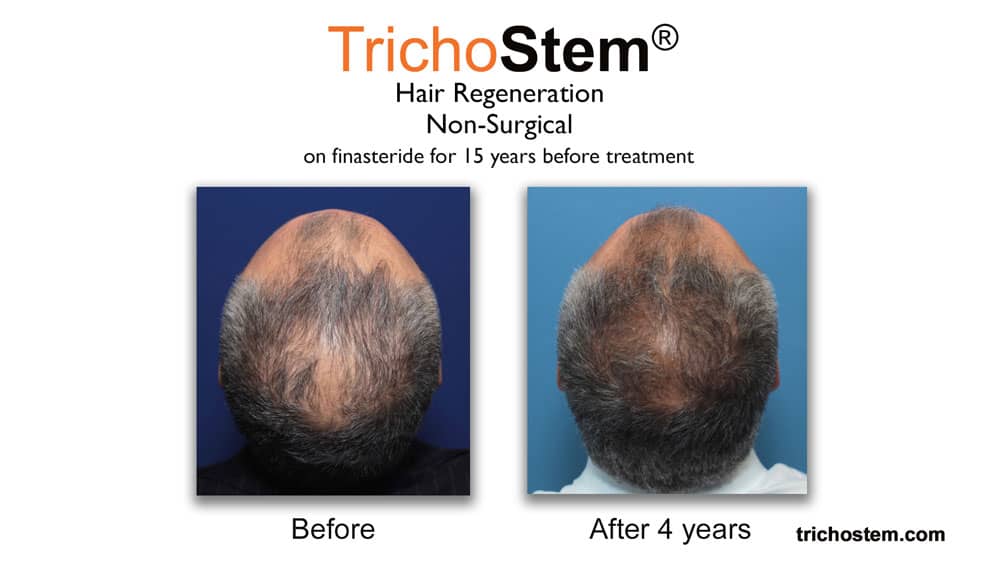
Patients from all over the world visit our offices every week because they can get a treatment in less than an hour for a fraction of the cost of a surgical hair transplant. To make TrichoStem Hair Regeneration more accessible, I built a freestanding center in Northern Virginia separate from our two Manhattan and Long Island locations. During the early stages of developing TrichoStem Hair Regeneration, I wondered what the difference would be for someone who was taking finasteride prior to receiving our treatment.
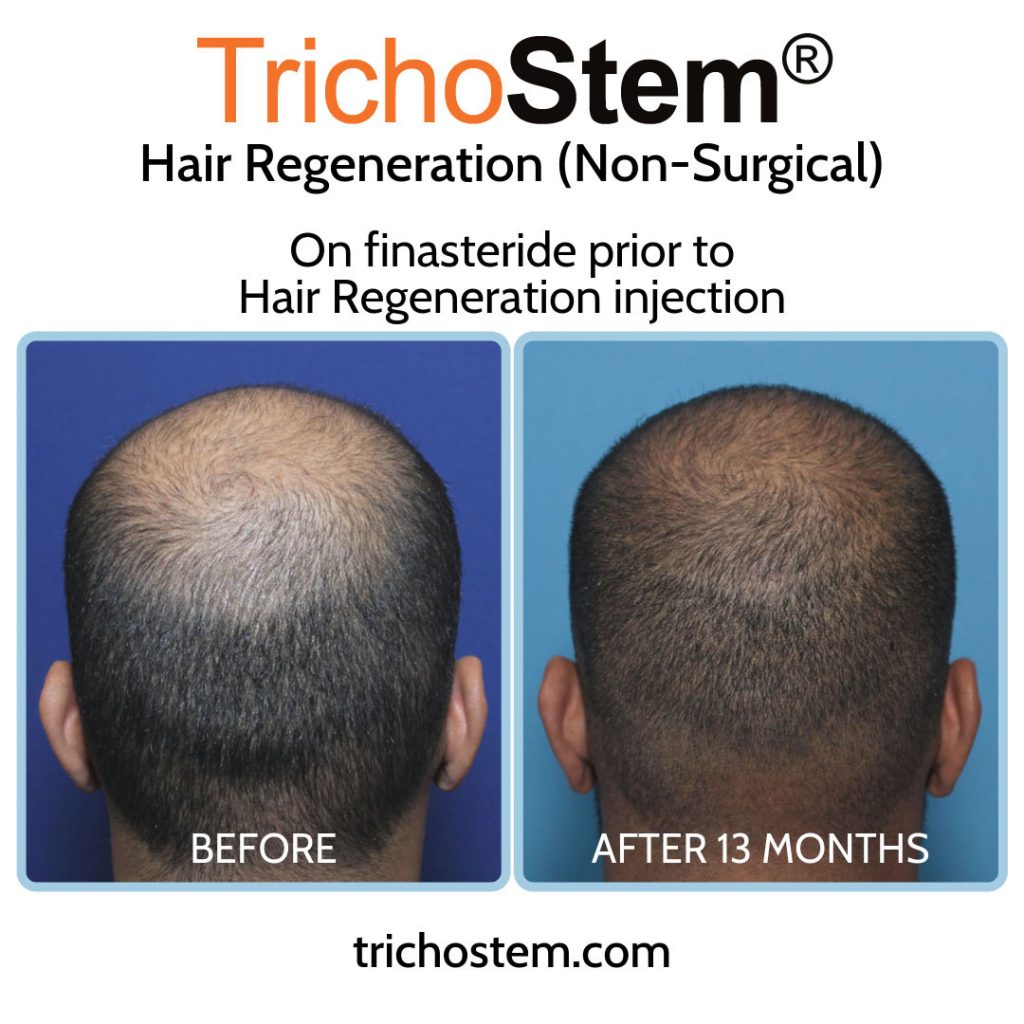
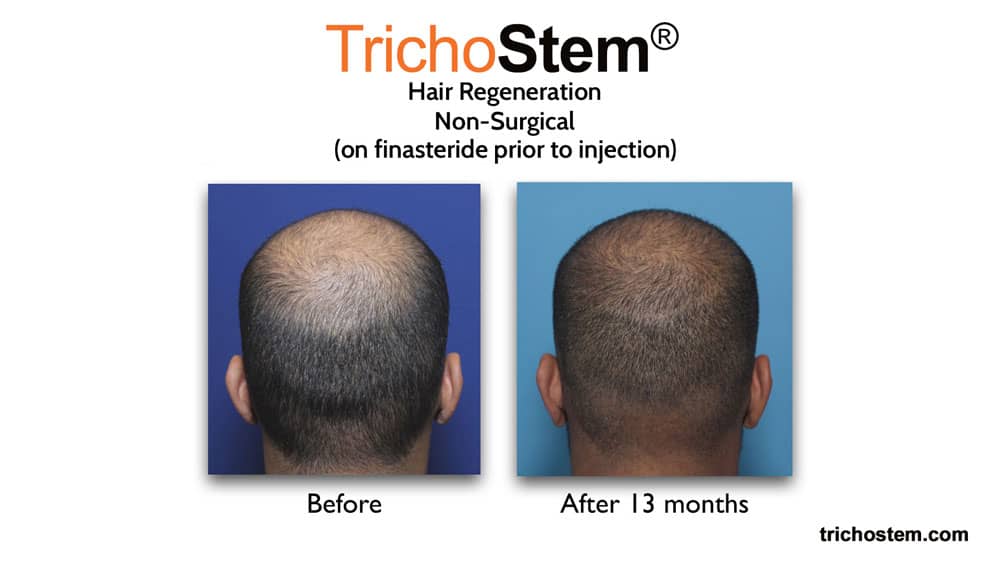
What is Finasteride?
Finasteride is a DHT (dihydrotestosterone) blocker that works by inhibiting the enzyme 5 alpha-reductase. This enzyme is in charge of converting testosterone to dihydrotestosterone. Hair that is sensitive to DHT thins, and eventually disappears due to male pattern hair loss. An important point to remember is that finasteride does not stop hair loss, but rather slows it down. As an example, imagine a train traveling at 100 miles per hour being slowed to 30 miles per hour. It will still arrive at its destination, but it will be much later.
Since 2011, I’ve had the unique opportunity to observe hair growth behavior in a diverse group of men and women of all ethnicities and ages. This remains a unique and unprecedented viewpoint, owing to the fact that I see patients after TrichoStem Hair Regeneration treatment every 3 to 6 months, and annually for the next 5 years and beyond.
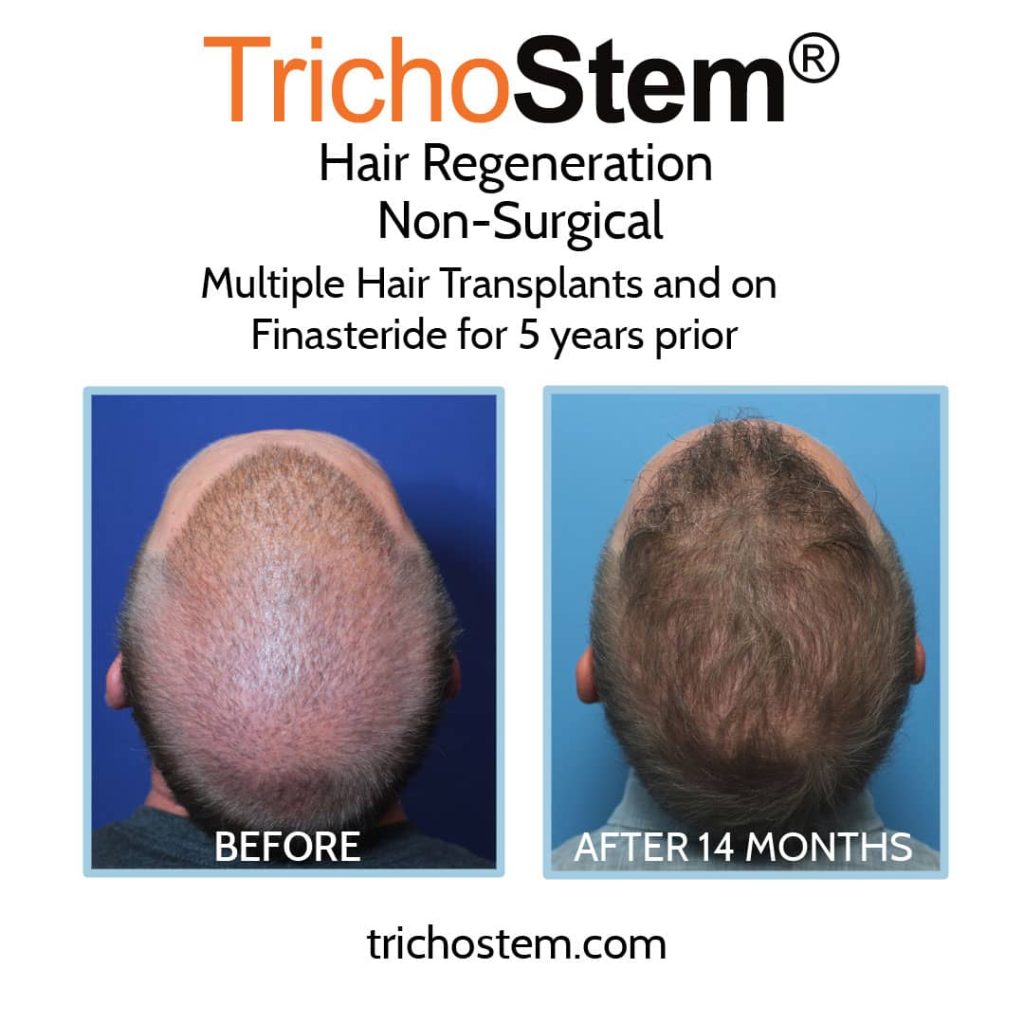
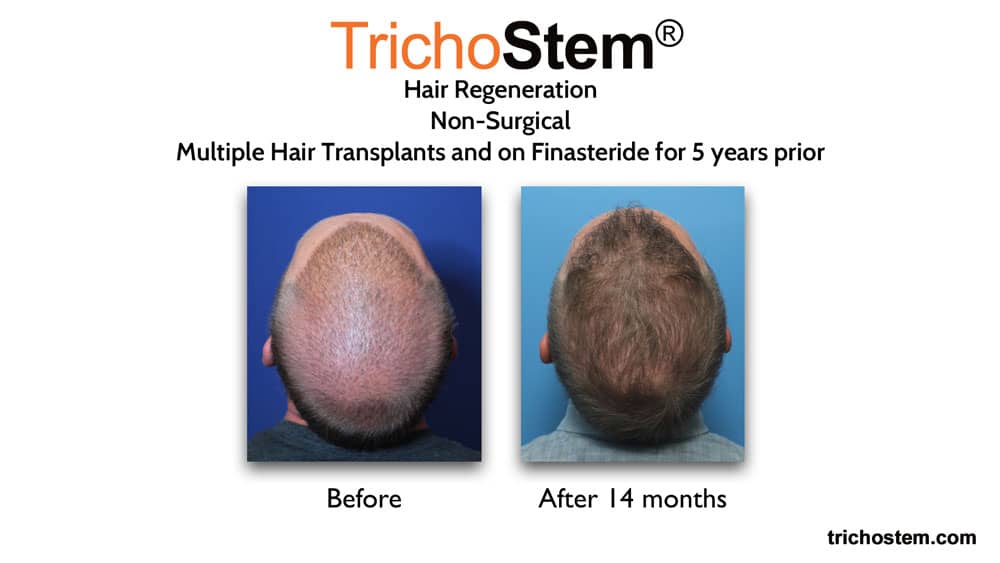
Why is Finasteride Not Working for Me?
Based on these long-term observations, I concluded that men have varying levels of DHT sensitivity, which affects the efficacy of finasteride, as well as TrichoStem Hair Regeneration. Men in their late teens and early twenties, for example, are classified as having high DHT sensitivity. Men can be classified as having lower DHT sensitivity because their onset age is much later, with hair thinning, hair loss progression much slower.
Based on these observations, I developed treatment plans for various types of male pattern hair loss. I’ve found that for men on finasteride, whether they see progression or stability in their hair loss, TrichoStem Hair Regeneration treatment has improved scalp coverage by reactivating hair growth and thickening individual hairs. Finasteride, I’ve concluded, helps to preserve the longevity of your hair follicles, but it does not stimulate growth or maximize your potential scalp coverage. Essentially, combining a DHT-blocker with TrichoStem Hair Regeneration creates a synergistic effect.
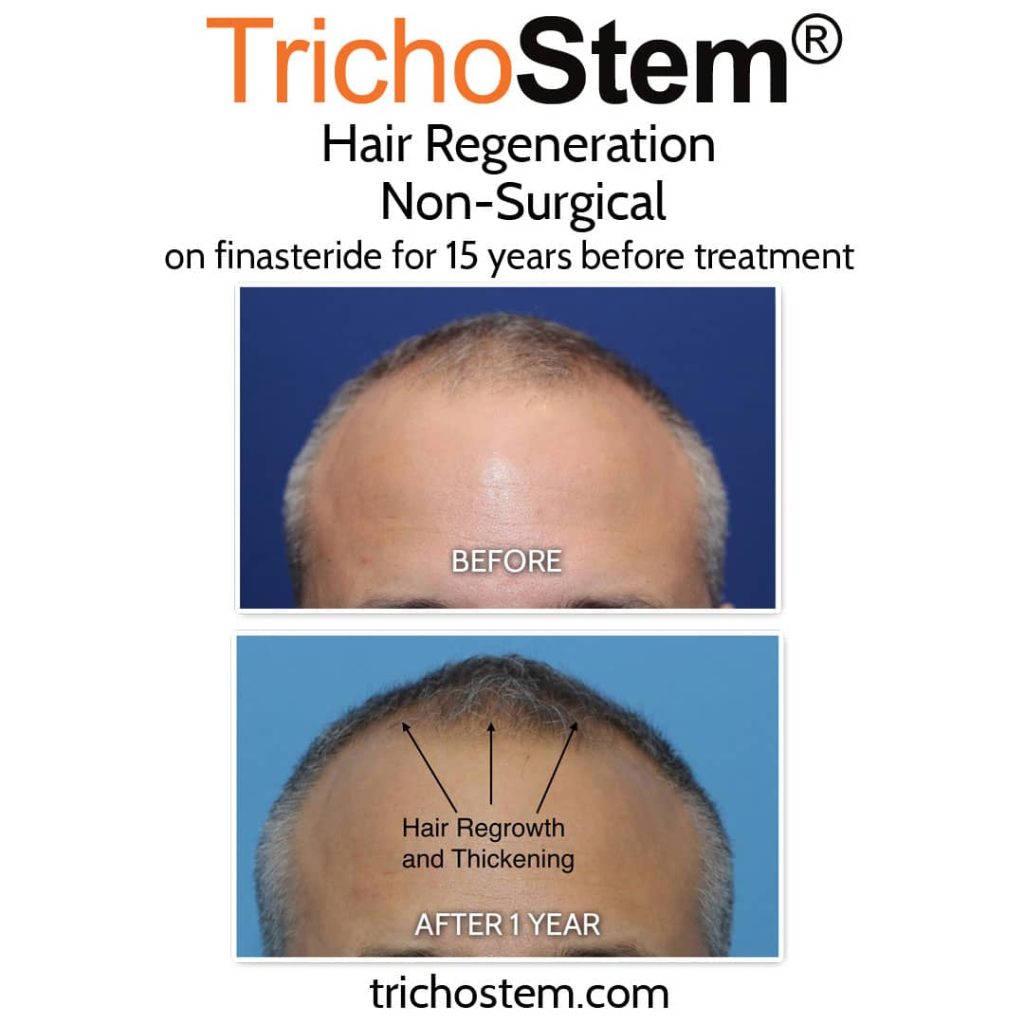
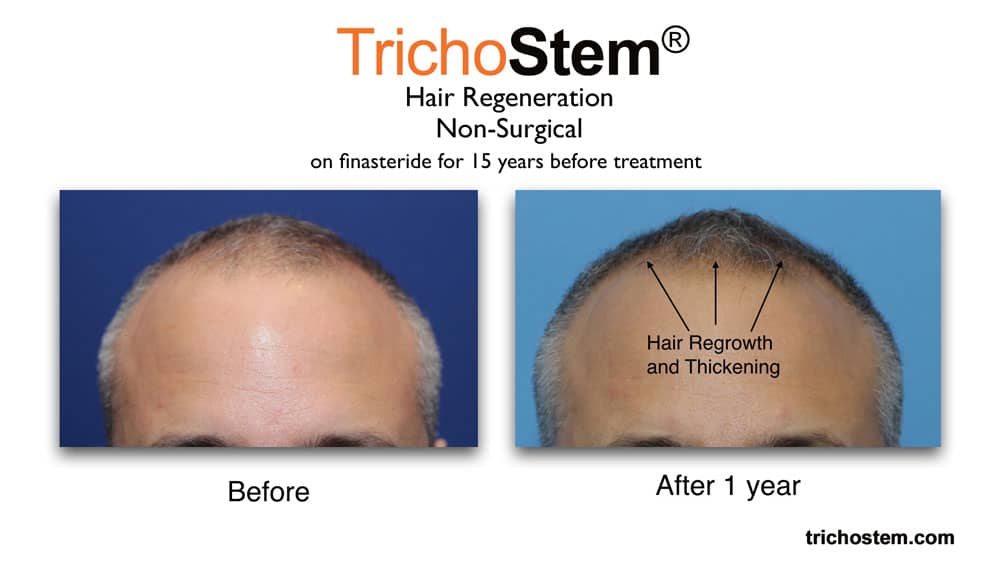
TrichoStem Hair Regeneration treatment has shown visible improvement in hair thickness and scalp coverage in over 99% of male and female patients treated since 2011. Although the benefits of PRP, or PRP with ACell for hair loss are finally being recognized, the current standard of practice among medical retailers is to require patients to have scalp injections every one to three months. TrichoStem Hair Regeneration treatment is a much more advanced system that typically requires only two treatments 18-24 months apart, with benefits lasting 3-5 years or longer.
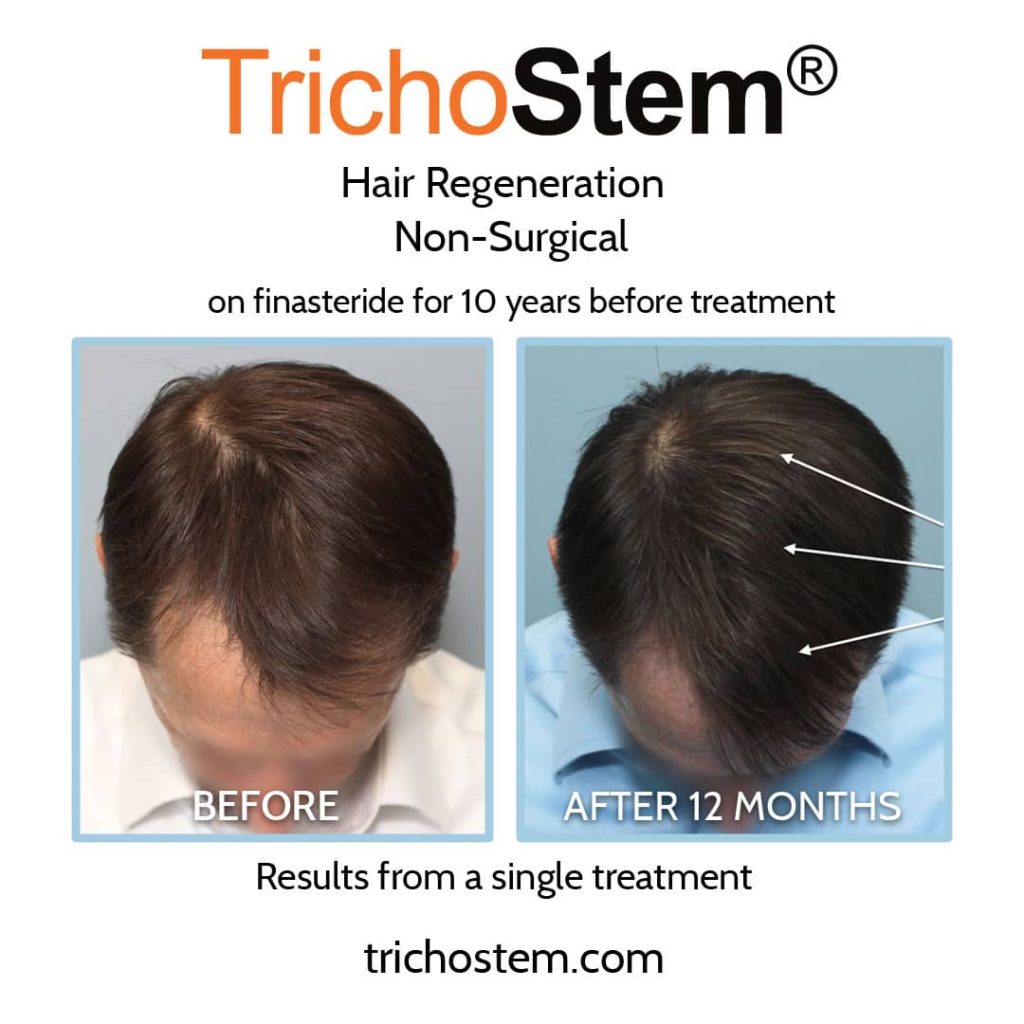
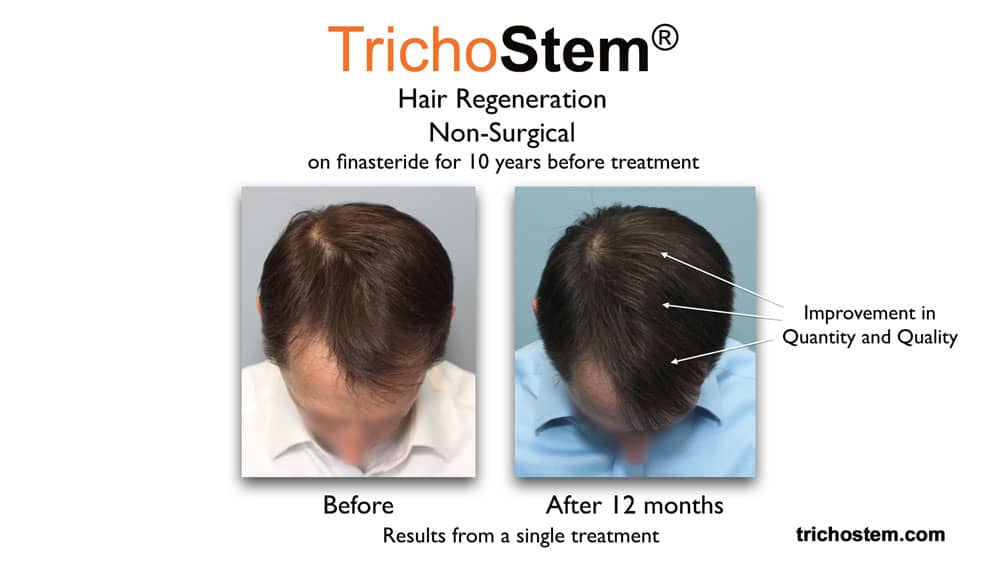
What to do if Finasteride is not Working?
While finasteride is important for slowing hair thinning in men with male pattern hair loss, it appears that finasteride alone does not maximize hair coverage, especially in men who have experienced hair loss progression while taking finasteride. The results of the synergy of finasteride and TrichoStem Hair Regeneration remain unrivaled.
